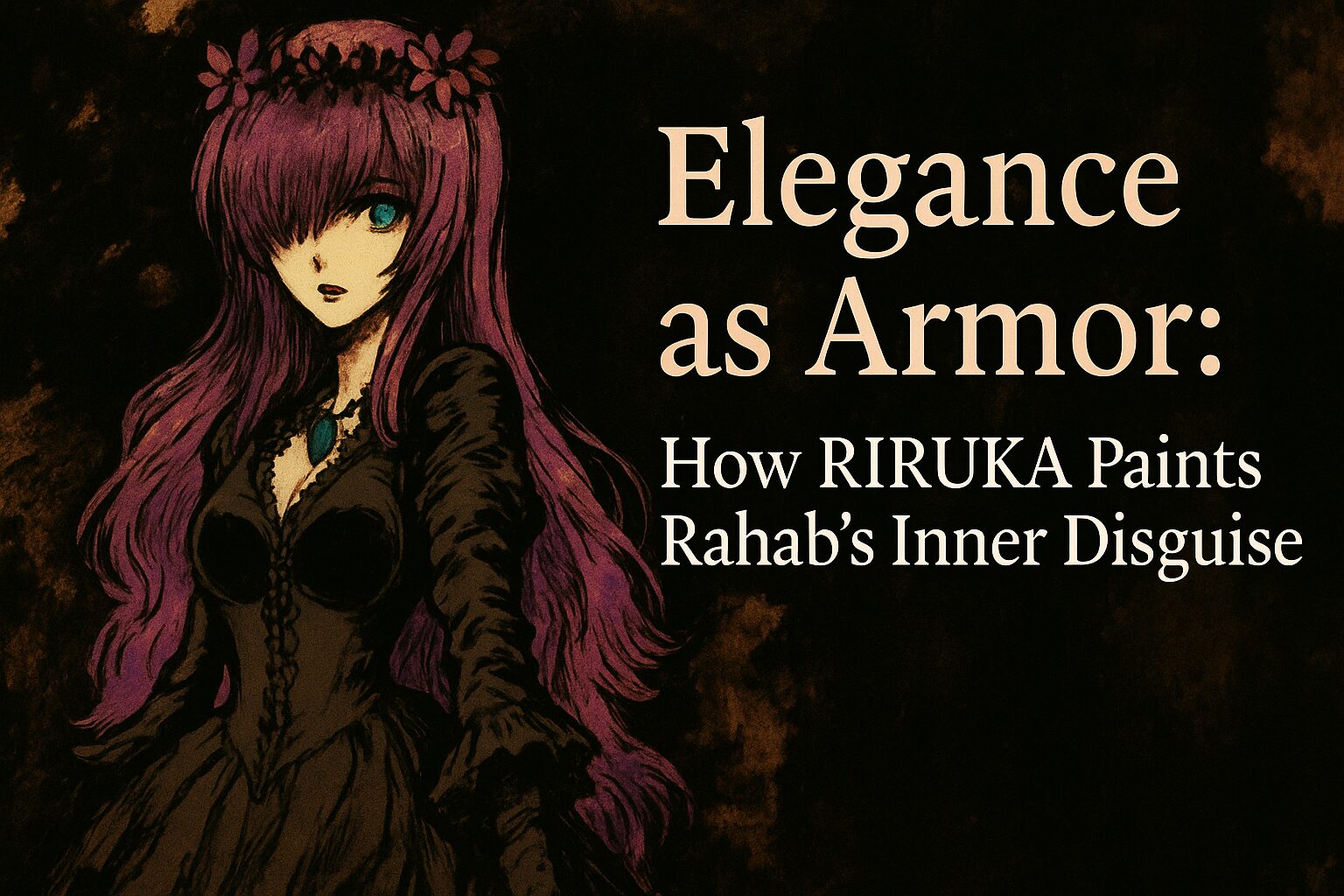Introduction: When the Beautiful is Also the Broken
Beauty can be a scream. Silence can be resistance.
In this powerful oil painting by RIRUKA—crafted as a visual counterpart to the track “Rahab’s mission”—we witness not just a portrait, but a strategy of survival. The image is soaked in contradictions: softness and shadow, floral motifs and burnt textures, passive gaze and fierce undertones.
The subject doesn’t ask to be seen.
She forces us to look—then challenges us to interpret.
The Sound Behind the Canvas: What is “Rahab’s mission”?
Rahab’s mission is not a typical punk song. It is experimental, cinematic, and fractured. It tells the story of a spy—not the kind with gadgets, but one manipulated by systems she can no longer understand. Her truth is blurred. Her loyalty is cracked. Her identity is wrapped in silence.
In this song, Rahab isn’t screaming—she’s dissolving.
This painting translates that dissolution not through blood or violence, but through gothic stillness.
Visual Analysis: What RIRUKA Reveals Through Style
1. Costume as Code
The woman in the painting wears a highly stylized black dress. It is refined, laced, and tailored—like a uniform. In a way, it functions just like Rahab’s role: meant to protect, but heavy to carry. The dress isn’t comfort. It’s obligation.
2. Hair and Crown
Her long lavender hair flows naturally, contrasting the rigidity of her outfit. It whispers of vulnerability, emotional memory, maybe even youth she’s lost.
But atop it sits a crown of purple flowers—wilted? plastic? poisoned? This is not a celebratory crown. It’s ritualistic, funereal, ceremonial. It echoes sacrifice.
3. The Gaze
Her turquoise eyes are magnetic—wide open, not afraid. But they do not invite you in. They guard something.
You’re not looking at her; you’re standing in her surveillance.
4. Background as Narrative
Behind her: darkness. Scratched, oxidized, textured like burnt wallpaper or collapsed ruins. It implies history—a place abandoned, a past consumed. She is alone, but the world behind her tells us why.
Symbolic Interpretation: Who Is She Really?
In the context of Rahab’s mission, this woman could be read as:
- Rahab’s public persona: the calm mask she wears in diplomatic functions or under scrutiny.
- A hallucination: a distorted image Rahab remembers or invents as comfort.
- A reflection of Moka: the “shadow” figure from the track’s lore—this could be a visualization of her other self, watching from within.
She is not just a symbol of femininity—she is a weaponized self, hardened by necessity, ornamented by control.
RIRUKA’s Style: Gothic, Digital, Emotional
What makes this painting especially powerful is that RIRUKA never tips fully into either realism or fantasy. Her style flirts with manga aesthetics, but her textures are analog and raw.
There are no glowing lights, no techno clichés—just shadow, earth tones, and emotion.
This hybrid makes the painting feel rooted in both contemporary and classical grief. It belongs to both Instagram and an ancient myth.
Emotional Takeaway: The Mission Continues… Internally
Unlike previous depictions of Rahab, which showed chaos, glitch, or violence, this one shows something quieter—perhaps more dangerous. The danger of being expected to look perfect while dying inside. The trauma of performance. The silence of obedience.
This Rahab doesn’t fall apart. She holds herself together too well. And that’s the real tragedy.



コメント